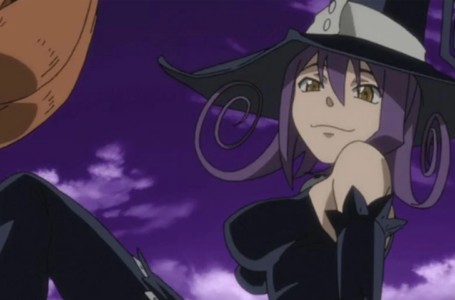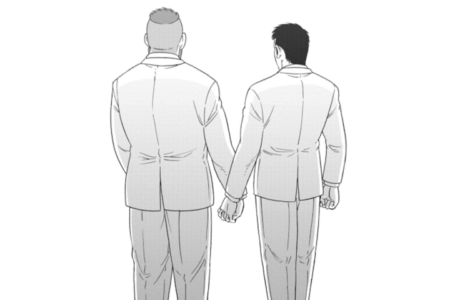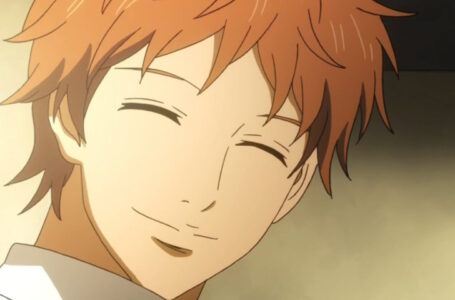Berserk volume 3 kicks off the Golden Age Arc

One of the most important aspects of Berserk isn’t the gore or the violence. Those things are the things that catch your eye and are a big reason why the manga remains so difficult to recommend to new readers, but they’re not what is at the heart of the story. To find that out, we have to go back to where it all began with Guts and find out a bit more about how the world has changed in the process.
Unfortunately, one thing that has never changed is that people can be right bastards sometimes. Especially when they think they can get away with it.
Berserk shifts to the Golden Age
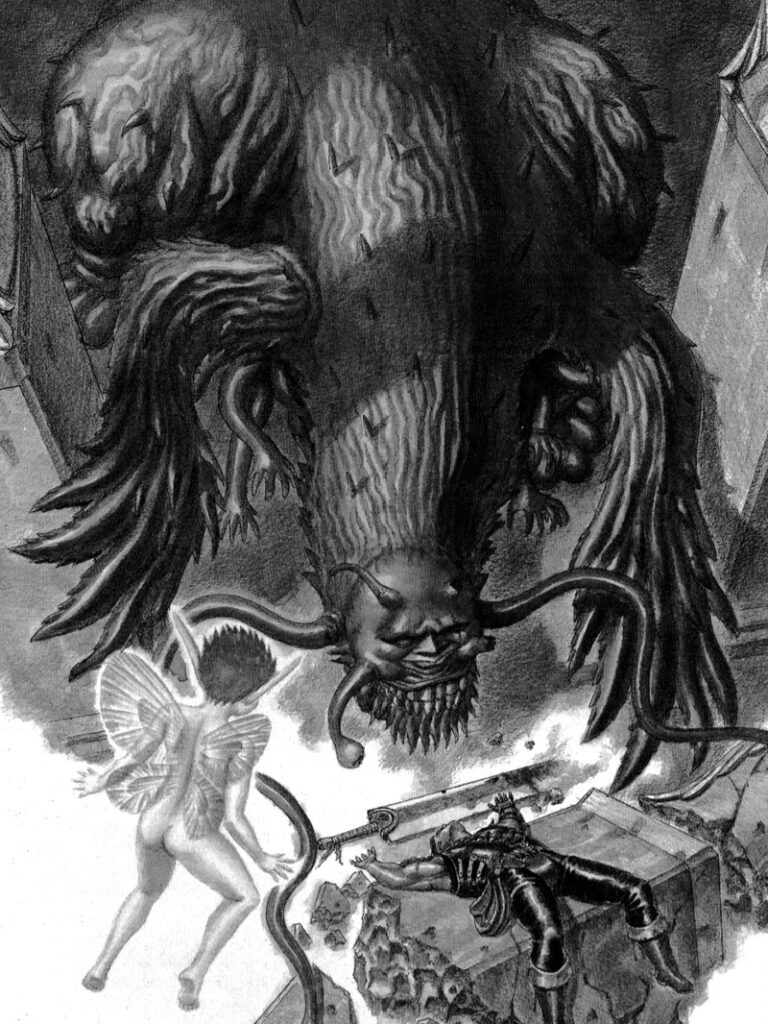
Volume two of Berserk cruelly ended in the middle of the visually stunning battle between Guts and the Count, whose current form looks like a strong contender for the title of greatest penis monster of all time. Things go back and forth, but it is clear that Guts is on the losing side. He is at his limit and very nearly dead when something unthinkable happens.
The Count’s daughter enters the room where the fight is happening. For the first time she sees her father in his full demonic glory and is understandably shocked at what she sees, but the Count is just as horrified at her reaction. Despite his boasts that he has cast off his humanity and surpassed mortal limits, there is some part of him that clings to his role as father and still wants to protect her from the evils of the world. Even if that evil is himself.
Guts, noting the Count’s pause, uses the situation to his advantage. He grabs the girl and wields her as a human shield, protecting himself from the Count’s attack and getting into a better position to attack. It is a monumental dick move, as pointed out by everyone in the room, including Puck and the Count. While the tactic is an obvious one, there is something delightful about everyone else in the chapter being shocked that Guts would stoop so low.
One of the fun wrinkles to Berserk is how the other characters react to Guts. He is a monster in all but form, something that elicits shock and contempt from those around him. They don’t roll their eyes and make snide comments under their breath. Puck looks on in disgust when Guts leaves Vargas to die in volume 2. The Count, who at this point is a giant centipede demon that eats people, is shocked that Guts would do something so underhanded.
This is something that is often missing from anti-hero stories. They frame their flawed characters in a way where their actions are simply accepted by those around them. It deadens the impact and frames them as misunderstood rather than dangerous.
In Berserk, Guts is a monster and we’re never under any illusion about that.
Using the young girl to his advantage, Guts manages to cut the Count’s face off but, thanks to his demonic physiology, he remains alive as the Beherit activates and transports Guts, Puck, the Count, and his daughter to the location of The God Hand. These five demons have been alluded to throughout the story but only in the vaguest sense possible. They are clearly five powerful demons, each with some form of impossible power.
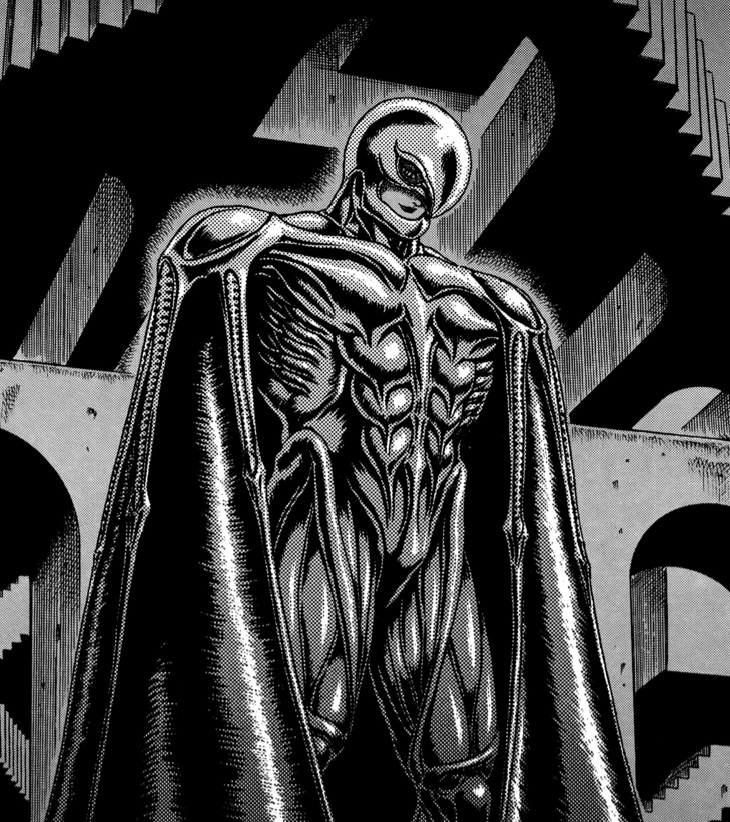
I thought Guts was angry before, but he flies into a new kind of rage at the sight of one of the demons he calls Griffin. The nature of their relationship isn’t clear, but Guts seems more determined than ever to kill this demon. When he gets close, though, the Brand of Sacrifice on his neck causes him crippling pain. Try as he might, he isn’t able to push through the magic and is cast aside with minimal effort.
Because I have done a lot of both reading and writing over the years, I recognise the purpose of this scene. Up until now, we’ve seen Guts as this unstoppable warrior of anger and spite, pushing through injuries that would kill a lesser man. This is the part of the story where he encounters the story’s villain and we see how wide the gap is between the Guts and Griffin. The hero always fails these fights because that’s what the flow of the story requires, and he does so in spectacular fashion. But really, it is the Count who somehow manages to steal the scene from both Guts and the God Hand.
Seeing the leaders of demonkind before him, the Count begs them to finish off Guts and save his life. They refuse on both counts; Guts is so far beneath them that he hardly registers as an obstacle and the Count has not paid the proper sacrifice. If he wants salvation, he must cast off the remains of his humanity as he did the day he became a demon in the first place.
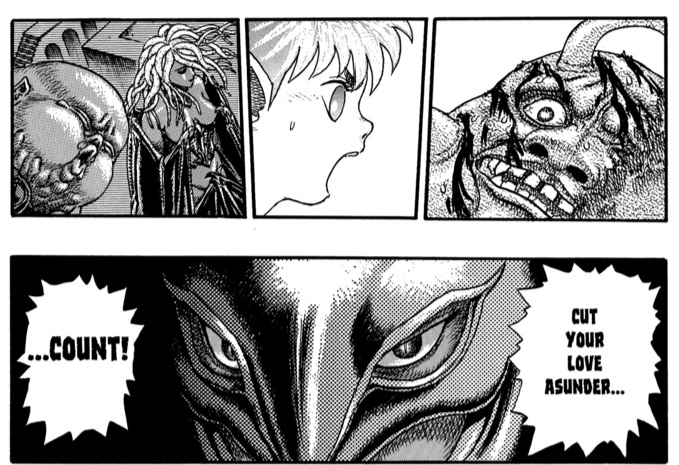
That day, he came home from his job of being a kind and just ruler of the land to find his wife, whom he loved dearly, in the midst of a pagan orgy, complete with a giant goat-headed demon. See, the story he told his daughter was a lie. Her mother wasn’t killed by heretics. Instead, she was the heretic. In a blind rage, the Count cut down everyone involved save his wife, who he could not bring himself to hurt even in such a desperate scene. Instead, he offered her up to the demon in exchange for freedom from his human weakness.
If he wanted to be a true demon, he would have to sacrifice the last bit of his humanity, represented by his daughter. There is a truly tense few pages where the Count toys with the idea. His fear of death is so great that he considers it, but in the end, he loves his daughter too much to toss her aside. Instead, he allows his soul to be sucked into oblivion rather than cause his daughter to receive the same Brand of Sacrifice that Guts wears.
It is actually quite sweet from an entirely unexpected source. While other scenes in Berserk look better or have more action, this felt like the first truly touching scene. Soon, Guts and everyone else are back in the human world and the Count’s daughter is distraught at having lost everything she has ever known. Rather than be comforting to her in the slightest, Guts is his usual bastard self, encouraging the hatred in her to give her strength rather than fall into despair.
At that point, the narrative shifts to a flashback and the start of what is called The Golden Age Arc. We see a young boy born to a woman hanging from a tree, raised by a slave to a mercenary troop, and groomed to be a soldier his whole life. We see the origin of Guts’ fighting style and the abusive training he received from his adoptive father.
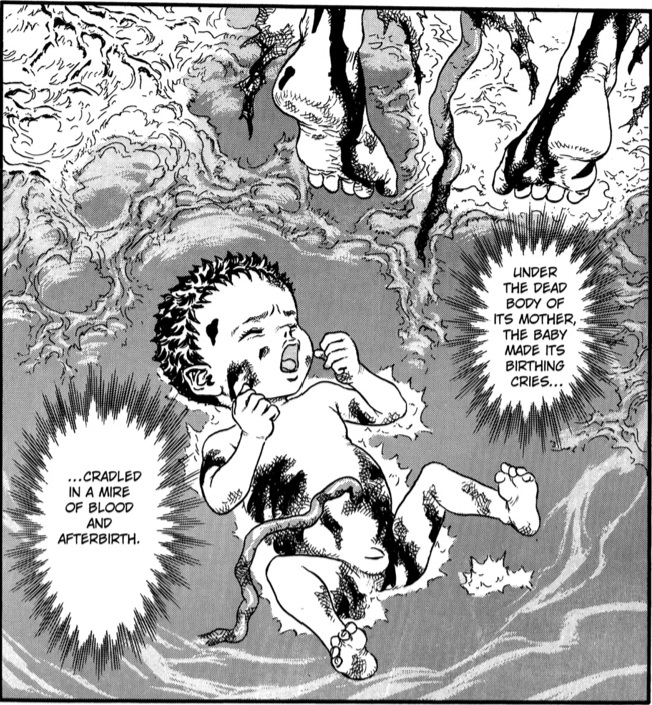
This section of Berserk is intended to show the how and why of Guts. His childhood is brutal and unforgiving. At the age of ten, he is in full-fledged battles. He kills to survive and earn his pay. It is slow and, in general, I’m not a fan of these long flashback sequences. The art continues to be stunning but the sudden shift in tone threatens to derail the plot’s momentum. Plus, sometimes it is better not to know than to know.
Of course, because this is Berserk and everyone must be terrible all the time, the chapter finishes with a grown man approaching Guts’ tent with clearly sordid intentions after having paid off the boy’s adoptive father for the privilege. Honestly, I could do without this bit, even as a cliffhanger moment at the end of the volume. Once again, Berserk proves to be a gorgeous manga with deep characters but its harrowing subject matter makes it so difficult to recommend.
Berserk remains one of the most celebrated manga in the world. The paperback and digital versions are widely available on Amazon.
Join The Discussion
Rice Digital Discord
Rice Digital Twitter
Rice Digital Facebook
Or write us a letter for the Rice Digital Friday Letters Page by clicking here!
Disclosure: Some links in this article may be affiliate links, which means we may earn a small commission if you make a purchase after clicking on them. This is at no additional cost to you and helps support Rice Digital!
- Six of the best Stands in JoJo’s Bizarre Adventure - June 2, 2023
- 4 of the best JRock tracks from May - June 1, 2023
- Hump Day Husbandos: Guts (Berserk) - May 31, 2023




